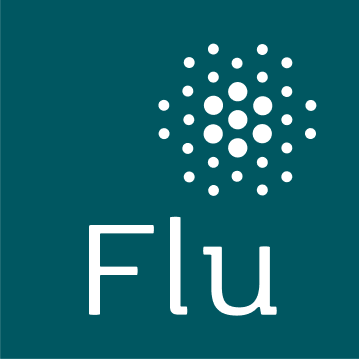Working Toward Greater Flu Vaccine Equity
Racial and ethnic minorities have lower rates of flu vaccination and higher risk for severe outcomes
At this point later in the 2022-2023 flu season, the good news is that flu vaccination has increased since Fall 2022, when rates were low and flu cases were higher than usual.
However, the ongoing trend of lower vaccination rates among racial and ethnic minority groups has continued from previous seasons to this one. It’s just one example of how racial inequities have created health disparities between communities—even in seasonal flu vaccination.
Flu vaccine inequities are nothing new; since at least 2010, flu vaccination rates have been consistently lower among Black, Hispanic, and American Indian/Alaskan Native adults than in White adults.
This season, as before, higher flu vaccination coverage has been recorded in White adults compared to most other racial or ethnic minority groups (see table). In children and pregnant people, the rates of flu vaccination this season have varied somewhat from the numbers seen in the general adult population. However, within two of these categories—children and pregnant people—Black people have the lowest flu vaccination rates compared to any other racial or ethnic group.
Flu Vaccination Rates in 2022-2023 Flu SeasonAs of February 24, 2023 |
|||
| Adults (18 years and older) |
Children (6 months to 18 years) |
Pregnant |
|
| American Indian/Alaskan Native, NH | 42.2% | N/A | N/A |
| Asian, NH | 49.7% | N/A | 65.9% |
| Black, NH | 38.5% | 48.3% | 29.7% |
| Hispanic | 35.3% | 53.9% | 47.6% |
| Other/Multiple, NH | 40.5% | 56.7% | 47.0% |
| Pacific Islander/Native Hawaiian, NH | Not included | N/A | N/A |
| White, NH | 53.3% | 56.7% | 47.7% |
N/A = Not available; included in the Other/Multiple, NH category.
NH = Non-Hispanic.
Not included = 2022-2023 data not included in latest report.
Unfortunately, many of these racial and ethnic groups not only have lower rates of flu vaccination—they also have a higher risk for severe flu outcomes, which include hospitalizations and ICU admissions. During flu seasons from 2009 to 2019, the rates of hospitalization and ICU admission due to influenza were higher in Black, Hispanic and American Indian and Alaska Native people on a consistent basis, compared with White people. The comparative differences in rates for severe flu outcomes were even greater when looking at data in children aged 0 to 4 years old.
Leveling flu vaccine disparities
There is much evidence that shows flu vaccines remain the best way to protect yourself against the flu. In addition to reducing the risk of getting sick from the flu, flu vaccination has been shown to reduce the severity of illness in people who have been vaccinated and still catch the flu. People who have had a flu vaccine are less likely to be hospitalized or admitted to the ICU with flu.
With this being said, taking action to increase vaccination rates and fight vaccine inequity among racial and ethnic minority groups demands a look at the causes of flu vaccination disparities. Why do they exist? What creates these differences?
As it turns out, there are several factors that contribute to flu vaccination disparities: lack of access to healthcare and insurance, missed opportunities for vaccination during routine healthcare visits, and misinformation about flu vaccines, among others. And aside from these factors, racism and prejudice are known to make inequities worse. Discrimination has created distrust among many racial and ethnic minority groups in the healthcare system.
Tackling the range of reasons why certain racial and ethnic minorities do not receive a flu vaccine requires sizable resources. In addition, there needs to be awareness campaigns about the benefits of flu vaccination. To begin addressing some of these challenges, in 2020 the Centers for Disease Control and Prevention (CDC) launched its Partnering for Vaccine Equity (P4VE) program, designed to create greater equity in flu and COVID-19 vaccination through community-based action.
P4VE has developed a network of partnerships with more than 500 national, state and local organizations, providing funding and support to build trust in communities and drive vaccine awareness, education and access. Through this program, national organizations and foundations have educated and trained community leaders and other spokespeople on vaccination, outreach methods and implementation of promotional events. Social media partners involved in this program have also been trained to share vaccine information, address vaccine misinformation and create communications to increase confidence in vaccines.
A variety of training and educational activities have resulted from this partnership, including webinars, virtual town hall events to discuss vaccine health equity, distribution and promotion for minorities and vulnerable populations, and door-to-door campaigns.
In 2021, P4VE provided more than $156 million in funding to over 500 partners, covering every state. By September 2022, 219,362 spokespeople working were involved in the program, and 2.4 million had attended the promotional events hosted by state, local and community-based partners. Social media campaigns had reached 428 million people. Educational campaigns were developed for 44 languages and dialects, including Cantonese, Farsi, Hindi, Japanese, Lao, Spanish, Swahili, Thai and Vietnamese.
P4VE research into factors that create vaccine inequity began before the COVID pandemic; with the advent of COVID in Spring 2020, it incorporated efforts to address future vaccination for COVID. In September 2022, P4VE reported that 1.98 million vaccines, for flu and for COVID, had been administered as part of its work. Today, the program strives to help increase adult vaccine equity and equality, not just for influenza and COVID.
Still need your flu shot? Find a flu vaccine today

